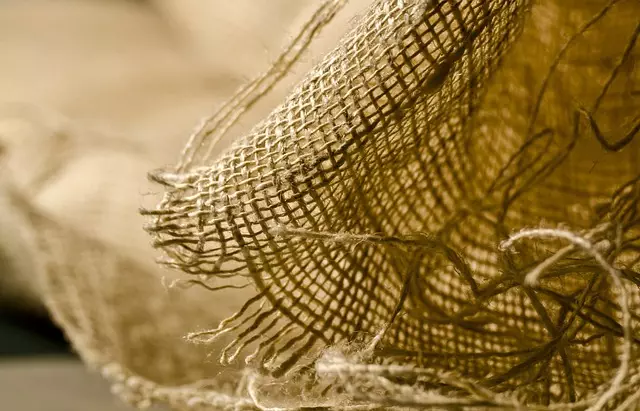The article explores the use of kratom (Mitragyna speciosa), a Southeast Asian evergreen tree, as a natural remedy for joint pain relief, particularly for those with chronic conditions. Its leaves contain alkaloids like mitragynine and 7-hydroxymitragynine, which may interact with opioid receptors to provide pain relief. The advantages of indoor cultivation of kratom are highlighted, as it allows for sustainable access and quality control. Successful indoor growth hinges on recreating its native tropical environment through precise management of light, humidity, temperature, and soil conditions. Indoor enthusiasts can potentially increase the potency and purity of the leaves, enhancing their effectiveness. The article also provides detailed instructions for cultivating kratom indoors, emphasizing the importance of sourcing quality seeds or saplings, optimal soil mix, proper container selection with drainage, strategic lighting, controlled watering, temperature management, organic fertilization, pruning, and maintaining humidity levels. Additionally, it advises on understanding the plant's different strains, like Maeng Da for strong analgesic properties, Bali for calming effects, and proper dosage to manage joint pain effectively. A holistic approach to pain management that includes diet, exercise, and natural remedies is recommended for optimal outcomes. Consulting healthcare professionals is crucial to ensure safe and effective use of kratom as part of a comprehensive treatment plan.
Explore the potential of kratom as a natural remedy for joint pain relief, a topic gaining attention among those seeking alternative methods for comfort. This article delves into the botanical properties of kratom and its therapeutic effects, offering insights on how to cultivate this plant indoors—a practical approach for year-round supply. We’ll guide you through the essential steps of growing kratom indoors, ensuring a sustainable source for your joint pain management needs. With expert tips and best practices, learn how to effectively harness the benefits of homegrown kratom for joint pain relief.
- Understanding Kratom and Its Role in Joint Pain Relief
- The Process of Growing Kratom Indoors: A Step-by-Step Guide
- Effective Joint Pain Management with Homegrown Kratom: Tips and Best Practices
Understanding Kratom and Its Role in Joint Pain Relief

Kratom, a tropical evergreen tree native to Southeast Asia, has gained attention in various health discourses, particularly for its potential role in joint pain relief. The leaves of Mitragyna speciosa, commonly known as kratom, contain alkaloids that may interact with the body’s opioid receptors, providing analgesic effects. These alkaloids, such as mitragynine and 7-hydroxymitragynine, are believed to play a significant part in alleviating chronic pain, including joint discomfort. As individuals seek natural alternatives to manage their pain without the side effects associated with prescription medications, kratom has emerged as a viable option for many.
The cultivation of kratom has become increasingly popular, with some enthusiasts successfully growing kratom indoors. This can be a practical approach for those living in regions outside of its natural habitat, ensuring a consistent and controlled supply. Indoor cultivation requires careful attention to factors such as light exposure, humidity, temperature, and soil quality to mimic the optimal conditions found in its native environment. By understanding the intricacies of kratom’s growth and maintaining an environment that replicates its natural state, users can potentially enhance the efficacy and purity of the leaves used for joint pain relief. This not only empowers individuals with the means to sustainably harvest the plant but also allows for a more tailored approach to dosage and strain selection, which are crucial factors when considering kratom’s role in joint pain management.
The Process of Growing Kratom Indoors: A Step-by-Step Guide

Cultivating kratom indoors offers a controlled environment to optimize its growth, ensuring that the conditions are consistently conducive for this tropical plant. The process begins with obtaining high-quality kratom seeds or saplings from a reputable supplier. Once acquired, it’s crucial to prepare the growing medium; a mix of peat moss, compost, and perlite can serve as a suitable substrate that retains moisture yet allows for adequate aeration. The containers should be spacious enough to accommodate the kratom’s root system as it matures—plastic pots with drainage holes are ideal.
Positioning your kratom plants near a south-facing window or under grow lights that mimic natural sunlight is essential, as kratom requires ample light for photosynthesis. The lighting should provide around 6 to 8 hours of light daily to simulate outdoor conditions. Watering must be done with care, ensuring the soil remains consistently moist but not waterlogged. Aim to maintain a stable temperature range between 70 to 85 degrees Fahrenheit, as kratom thrives in warm environments. Regular fertilization with a balanced, organic fertilizer will provide the necessary nutrients for healthy growth, and pruning can encourage bushier plants and larger leaves. Monitoring humidity levels is also important; misting the air or using a humidifier can help maintain an ideal environment of around 50 to 70 percent humidity. With diligent care and attention, growing kratom indoors can yield a bountiful harvest, providing access to this natural remedy for joint pain relief year-round.
Effective Joint Pain Management with Homegrown Kratom: Tips and Best Practices

Growing kratom indoors can be a rewarding endeavor for those seeking effective joint pain management, as it allows for consistent and potent supplies of this medicinal plant. Kratom (Mitragyna speciosa), native to Southeast Asia, has been traditionally used to alleviate chronic pain, including that associated with joint conditions. To successfully cultivate kratom within your home, you must mimic its natural environment. It thrives in warm, humid conditions with plenty of indirect sunlight; a greenhouse setup or a sunny, south-facing room can be ideal. Ensure your kratom plants have well-draining soil rich in organic matter and maintain consistent moisture levels to prevent drought stress, which can affect the potency of the leaves. Regular pruning encourages bushier growth and increased yields. When it comes to harvesting, pick the mature leaves for higher alkaloid content, which are believed to be more effective for joint pain relief.
When managing joint pain with homegrown kratom, it’s crucial to understand dosage and strain selection. Different strains of kratom have varying alkaloid profiles that can influence their effects. For instance, Maeng Da strains are known for their potent analgesic properties, while Bali and Indo strains are favored for their soothing and relaxing qualities. Always start with a low dose to gauge your body’s response before adjusting as necessary. It’s also important to monitor the frequency of use, as regular consumption can lead to tolerance over time. Consulting with healthcare professionals is recommended to ensure that kratom complements any existing treatments safely and effectively. Additionally, keep in mind that while kratom may offer relief for joint pain, a holistic approach incorporating diet, exercise, and other natural remedies often yields the best results.
In conclusion, kratom has emerged as a natural alternative for joint pain relief, with its efficacy complemented by the ability to cultivate it indoors. The insights provided into understanding kratom’s role in pain management, coupled with the detailed guide on growing kratom indoors, empower individuals to harness this potential remedy directly from their homes. By adhering to the best practices for homegrown kratom cultivation and implementing effective joint pain management strategies, one can explore a natural pathway to relief. As always, it’s crucial to consult healthcare professionals before incorporating any new treatment into your health regimen. Growing kratom indoors may offer a sustainable and controlled approach to accessing this botanical source of relief for joint pain, contributing positively to one’s overall well-being.






